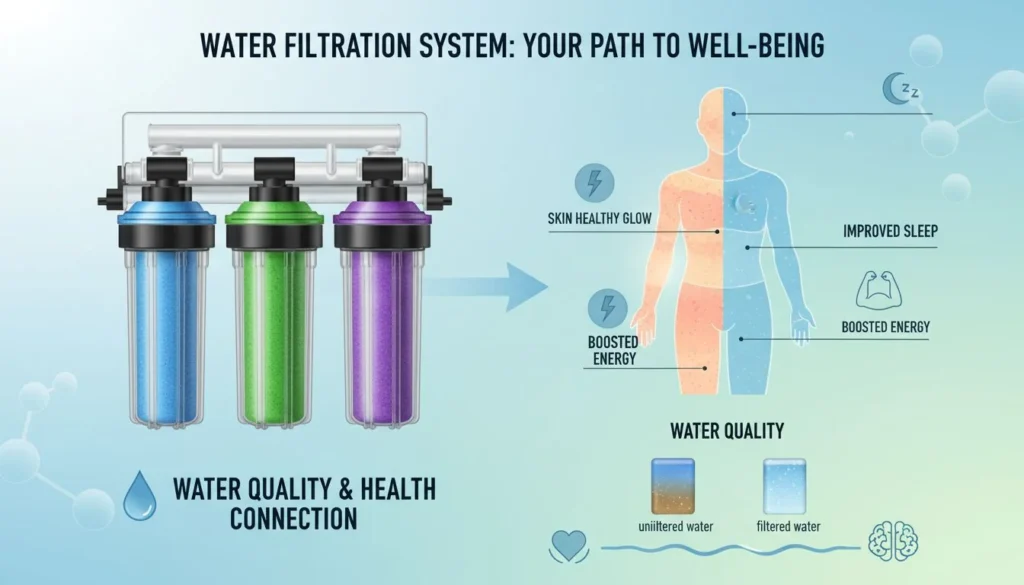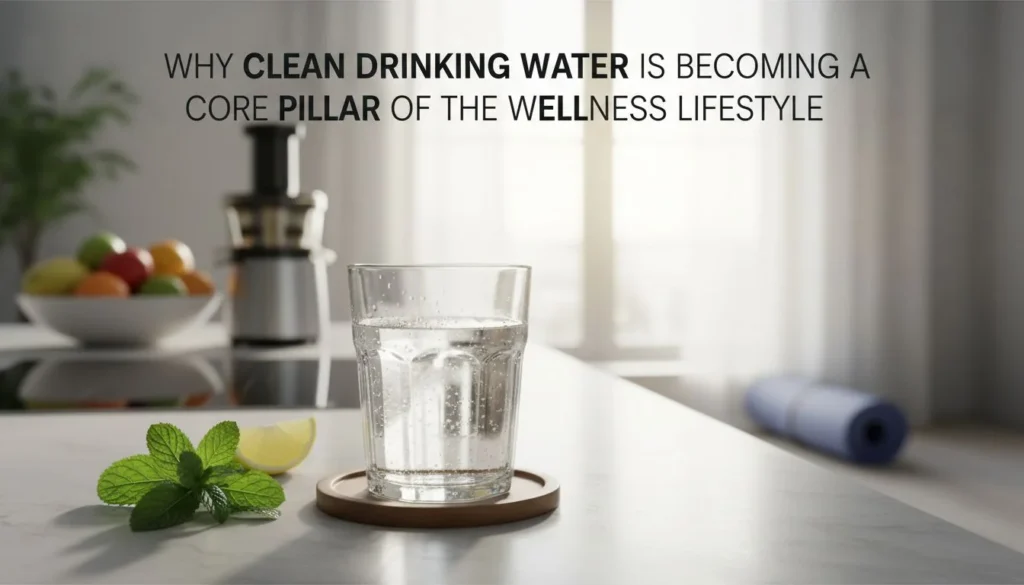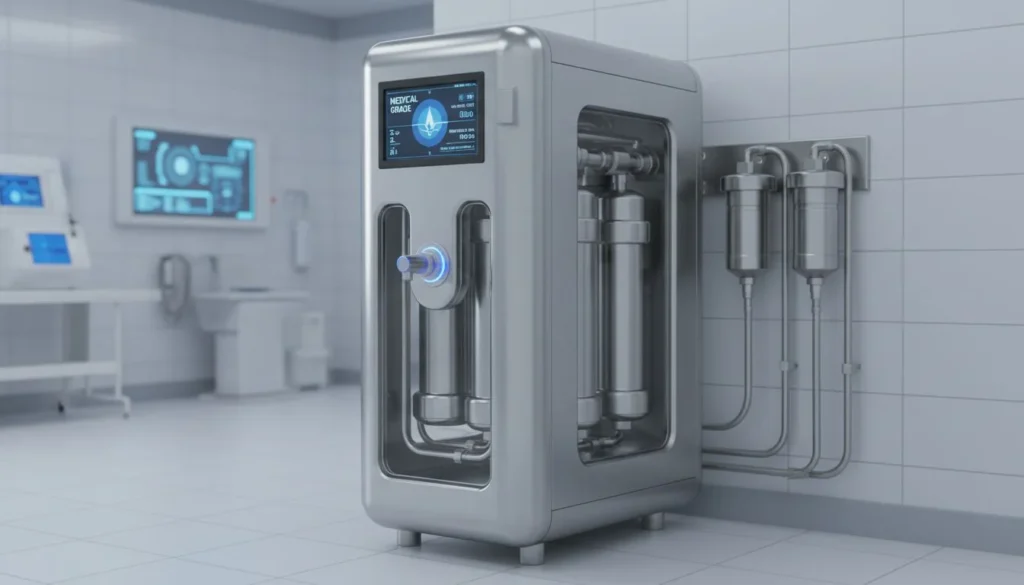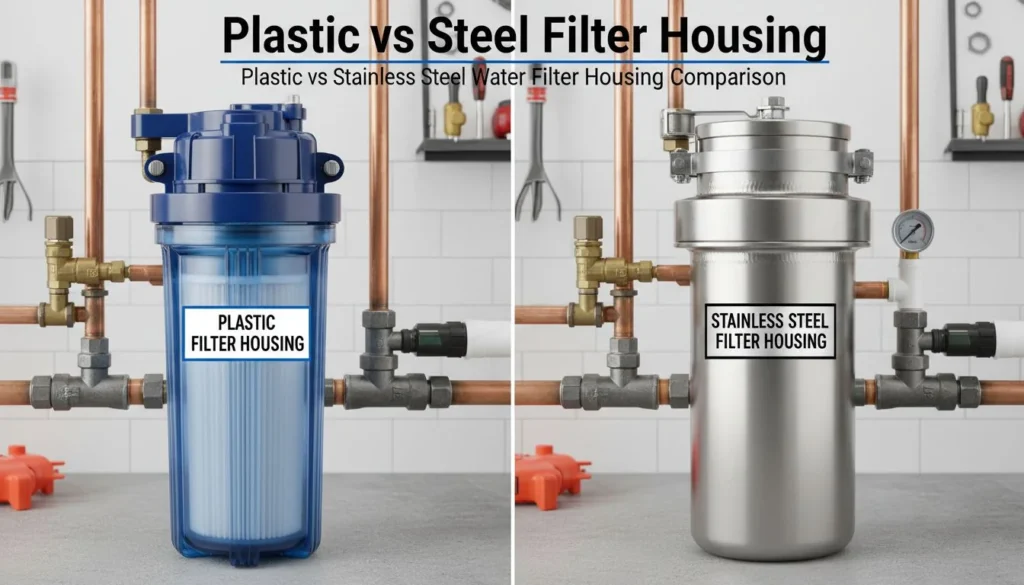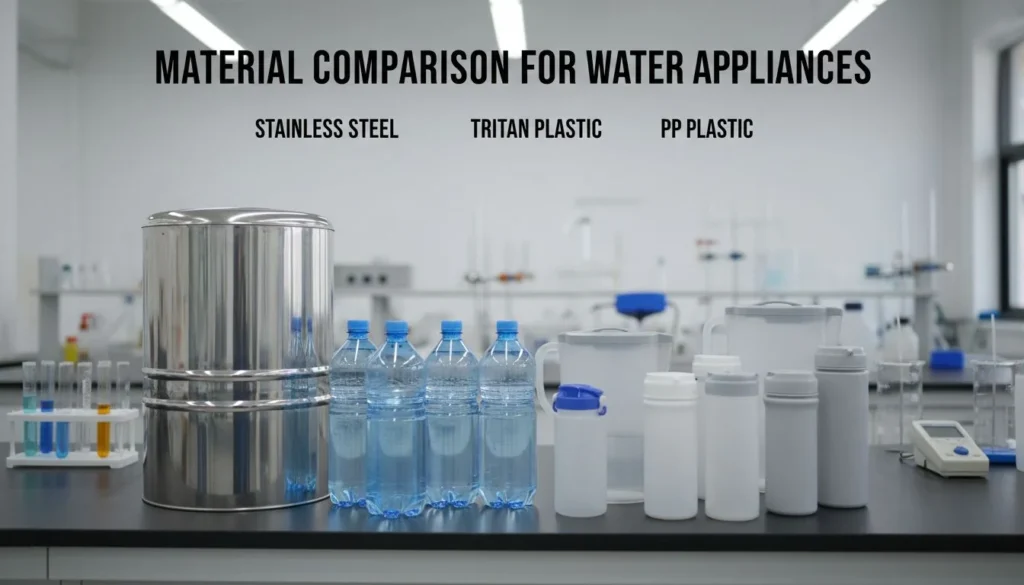
Vous êtes-vous déjà trouvé à la croisée des chemins de la création ou de la fabrication de purificateurs d'air, curieux de savoir combien de temps durerait le processus de création ou de fabrication d'un purificateur d'air ? OEM/ODM Le voyage dure-t-il ?
Les OEM/ODM Le processus de sélection des purificateurs d'air prend généralement entre 3 et 6 mois. Ce délai varie en fonction de la complexité de la conception, de l'expertise des partenaires et de l'efficacité de la communication. Les principales étapes sont la conception, le prototypage, les essais et la gestion de la production.
Bien que cette vue d'ensemble fournisse une chronologie de base, il est essentiel de comprendre chaque étape en détail pour rationaliser les processus et éviter les retards. Consultez les sections suivantes pour obtenir des informations plus détaillées sur l'optimisation du calendrier de développement et de fabrication de votre purificateur d'air.
Le processus OEM/ODM pour les purificateurs d'air dure de 3 à 6 mois.Vrai
Le calendrier varie en fonction de la complexité de la conception et de l'expertise des partenaires.
Comment la OEM Le processus diffère de la ODM Processus ?
Naviguer dans l'espace OEM et ODM Les processus de fabrication peuvent être complexes, en particulier lorsqu'il s'agit de fabriquer des purificateurs d'air. Comprendre les distinctions est la clé du succès.
Les OEM (Original Equipment Manufacturer) consiste à fabriquer des produits sur la base des spécifications d'un client, tandis que le processus de fabrication d'équipement d'origine (Original Equipment Manufacturer) consiste à fabriquer des produits sur la base des spécifications du client. ODM (Original Design Manufacturer) offre des services de conception et de fabrication de produits conçus par le fabricant. Le choix entre OEM et ODM dépend du niveau de contrôle souhaité sur la conception et la production.
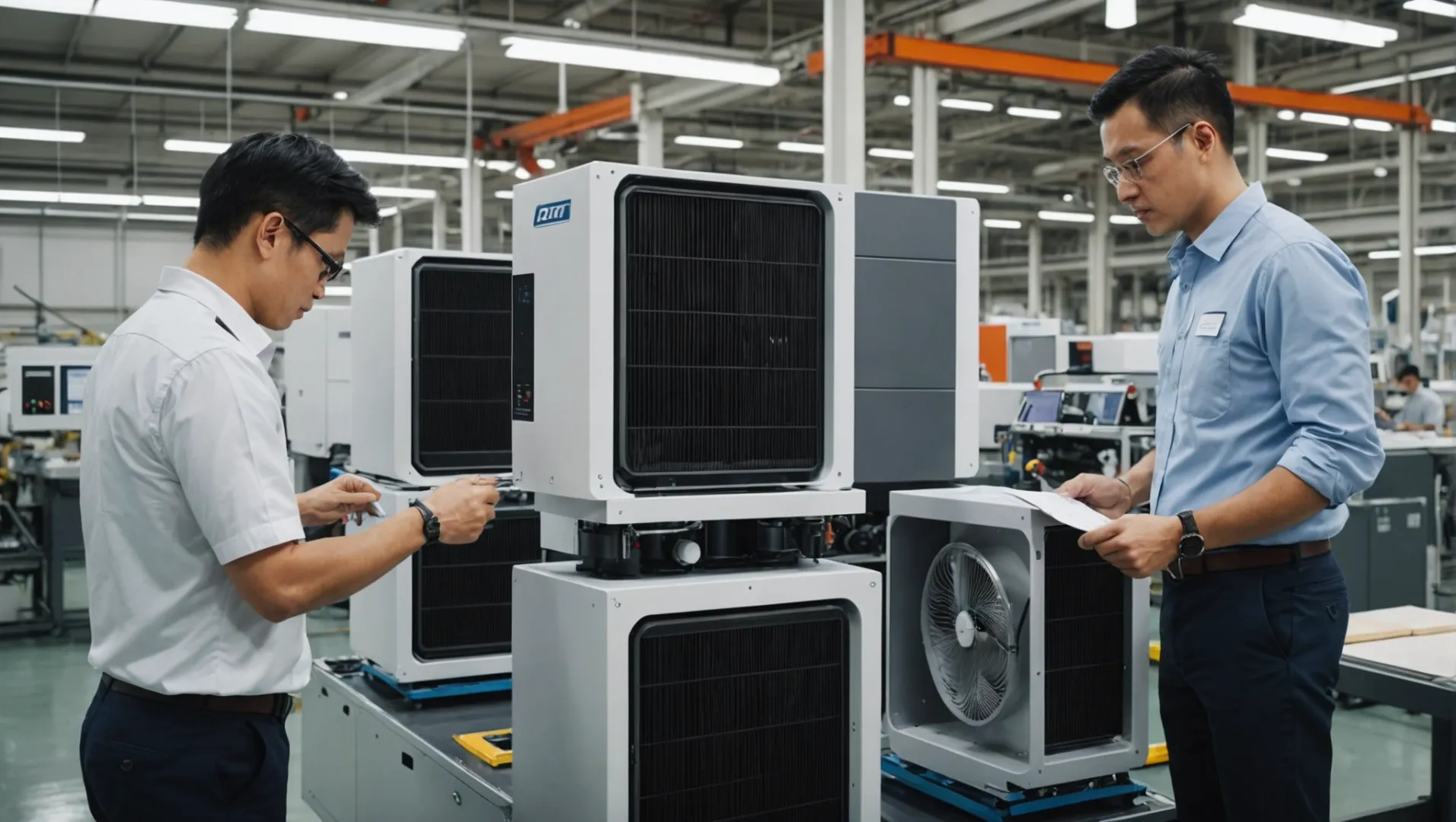
Comprendre OEM: Fabrication d'équipements d'origine
Les OEM processus1 est souvent préférée par les entreprises qui ont une conception de produit spécifique mais qui n'ont pas la capacité ou les ressources nécessaires pour le fabriquer elles-mêmes. Le principal avantage de cette approche est qu'elle permet aux entreprises de conserver un contrôle total sur la conception et les spécifications de leur produit.
- Le contrôle de la conception : OEM Les clients fournissent des spécifications détaillées, ce qui permet de réaliser leur vision sans aucune modification.
- Personnalisation : Les produits sont adaptés aux exigences du client, ce qui est idéal pour les entreprises ayant des besoins uniques en matière de produits.
- Focus sur la marque : La marque du client est mise en évidence, ce qui est essentiel pour les entreprises ayant une forte identité de marque.
Exemple de scénario : Une entreprise conçoit un purificateur d'air innovant à l'aide d'une technologie brevetée et s'associe à une société de conseil en gestion d'entreprise. OEM pour le fabriquer, ce qui garantit la qualité et l'intégrité de la marque.
Exploration ODM: Fabrication de conception originale
D'autre part, le ODM processus2 convient aux entreprises qui n'ont pas nécessairement de conception de produit spécifique et qui recherchent des solutions globales, comprenant la conception et la fabrication de produits.
- Expertise en matière de conception : Les ODM fournissent des services de conception, en proposant des modèles préexistants ou en travaillant en collaboration sur de nouveaux modèles.
- Rapidité de mise sur le marché : Comme les dessins sont souvent prêts à l'emploi, les produits peuvent être mis sur le marché plus rapidement qu'avec les produits de l'Union européenne. OEM.
- Le rapport coût-efficacité : L'utilisation d'un ODM peut être rentable, car les coûts de conception sont répartis entre plusieurs clients.
Exemple de scénario : Une entreprise en démarrage souhaite pénétrer rapidement le marché des purificateurs d'air. ODM avec un design éprouvé qui s'aligne sur l'esthétique de leur marque.
Les principales différences en un coup d'œil
| Fonctionnalité | OEM | ODM |
|---|---|---|
| Contrôle de la conception | Haut | Moyenne à faible |
| Niveau de personnalisation | Complet | Limitée |
| Rapidité de mise sur le marché | Variable | Généralement plus rapide |
| Coût | Investissement initial plus élevé | Généralement plus faible |
Choisir entre OEM et ODM
Décider entre OEM et ODM dépend des objectifs de votre entreprise, de votre budget et du niveau de personnalisation nécessaire. Si le contrôle de chaque détail est crucial, OEM est probablement le meilleur choix. Toutefois, si le délai de mise sur le marché et le coût sont des facteurs importants, envisager une ODM3 pourrait être avantageuse.
La communication régulière et la gestion de projet sont essentielles dans les deux processus. Des réunions hebdomadaires et des visites d'usine permettent de se faire une idée de l'avancement de la production et des difficultés potentielles.
L'OEM permet un contrôle total sur la conception du produit.Vrai
L'OEM permet aux clients de spécifier chaque détail du produit.
La mise sur le marché des produits ODM est généralement plus lente que celle des produits OEM.Faux
L'ODM utilise souvent des modèles prêts à l'emploi, ce qui accélère l'entrée sur le marché.
Quelles sont les principales étapes du développement d'un purificateur d'air ?
Pour se lancer dans le développement d'un purificateur d'air, il faut bien comprendre les étapes essentielles.
Les principales étapes du développement d'un purificateur d'air sont la conception, le prototypage, les tests de performance, la validation et la planification de la production. Chaque étape joue un rôle crucial pour garantir que le produit final répond aux normes de qualité et aux exigences du marché.
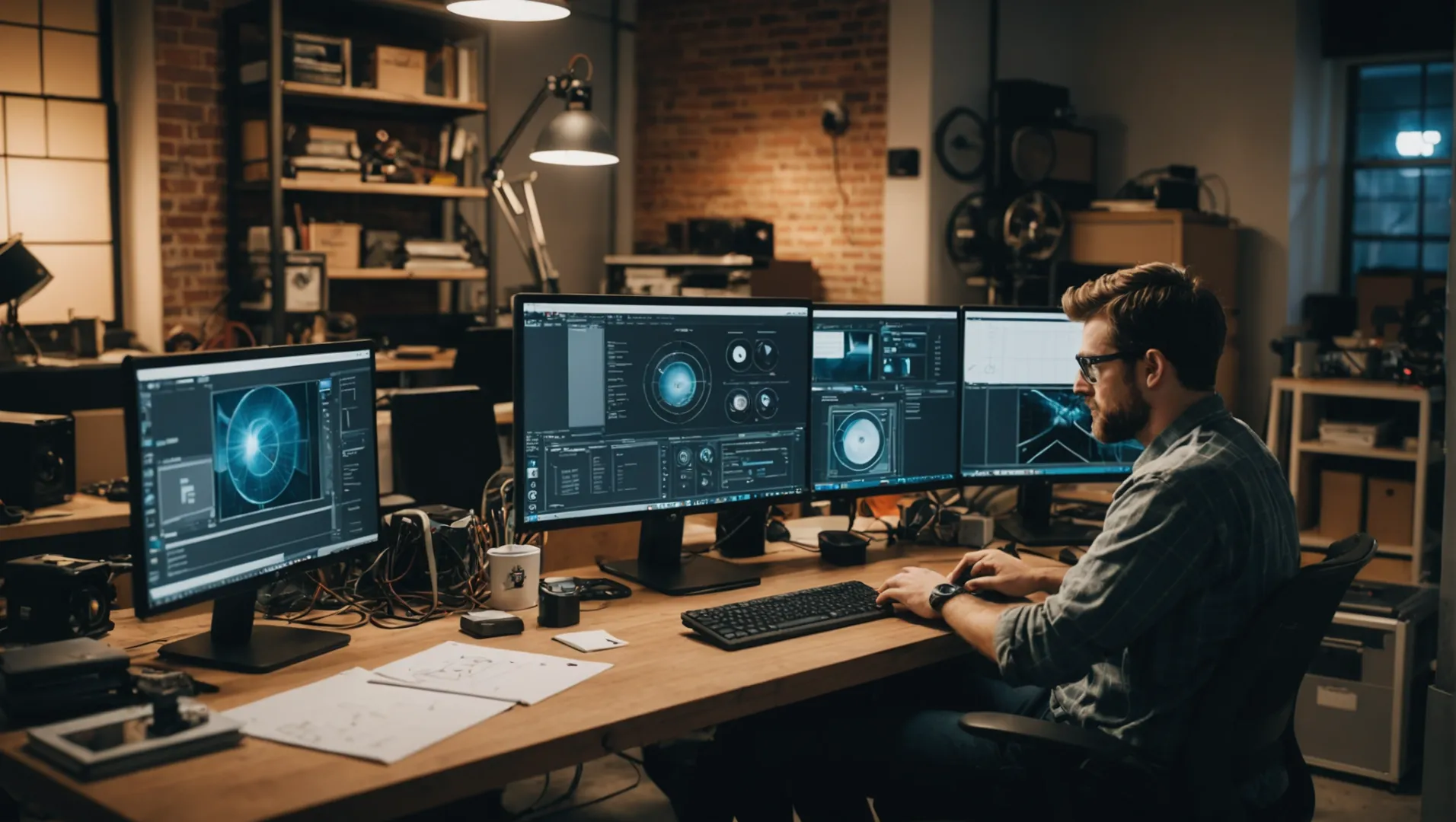
Conception et idéation
L'étape initiale consiste à faire un brainstorming et à élaborer un cadre conceptuel pour le purificateur d'air. Il s'agit notamment de définir le public cible, d'identifier les caractéristiques uniques et d'esquisser les spécifications techniques. La collaboration avec des concepteurs et des ingénieurs expérimentés peut améliorer considérablement le processus d'idéation, en garantissant que les concepts innovants sont à la fois pratiques et réalisables.
Prototypage
Une fois qu'un concept solide est établi, l'étape suivante consiste à créer un prototype. Cette représentation tangible permet aux développeurs d'évaluer la praticité et la fonctionnalité de la conception. Au cours du prototypage, il convient d'envisager la participation d'équipes interfonctionnelles afin d'évaluer différents aspects tels que la facilité d'utilisation, l'esthétique et la durabilité. Les tests itératifs et le retour d'information à ce stade permettent d'affiner la conception avant d'aller de l'avant.
Tests de performance
Les tests de performance sont essentiels pour s'assurer que le purificateur d'air répond aux normes réglementaires et aux attentes des clients. La réalisation de tests en laboratoire dès le départ permet d'identifier les problèmes potentiels susceptibles d'entraîner des défaillances ultérieures. En investissant dans des protocoles de test complets, vous pouvez gagner du temps et des ressources à long terme en évitant des reconceptions ou des rappels coûteux.
Comprendre les exigences réglementaires4 est également essentielle à ce stade pour garantir la conformité avec les normes industrielles.
Validation et itération
Après les essais initiaux, une validation supplémentaire est nécessaire pour affiner la conception. Il s'agit de recueillir les commentaires des utilisateurs, d'effectuer des évaluations de l'impact sur l'environnement et d'évaluer l'efficacité énergétique. Ce processus itératif permet de s'assurer que tous les problèmes identifiés sont résolus avant de passer à la production en série.
Planification de la production
La dernière étape consiste à planifier en détail la production. Il s'agit notamment de fixer des échéances, d'obtenir du matériel et d'organiser une équipe de gestion de projet pour suivre l'avancement des travaux. Des réunions régulières avec les parties prenantes permettent de maintenir l'alignement et de relever rapidement les nouveaux défis.
Explorer des stratégies de production efficaces5 peut être bénéfique pour l'optimisation des processus de fabrication.
La compréhension de ces étapes permet aux entreprises de planifier stratégiquement leur cycle de développement, en améliorant à la fois la qualité du produit et l'efficacité du délai de mise sur le marché.
Le prototypage est la première étape du développement d'un purificateur d'air.Faux
Le design conceptuel précède le prototypage dans le développement d'un produit.
Les tests de performance garantissent la conformité aux normes industrielles.Vrai
Les essais permettent de vérifier que le produit répond aux exigences réglementaires et aux attentes des clients.
Comment accélérer le processus de fabrication des purificateurs d'air ?
L'accélération de la fabrication des purificateurs d'air nécessite une planification stratégique et une exécution efficace à chaque étape.
Pour accélérer la fabrication des purificateurs d'air, il convient de choisir des partenaires expérimentés, de rationaliser la communication, de procéder à des essais rigoureux dès les premières étapes et de gérer efficacement les projets.
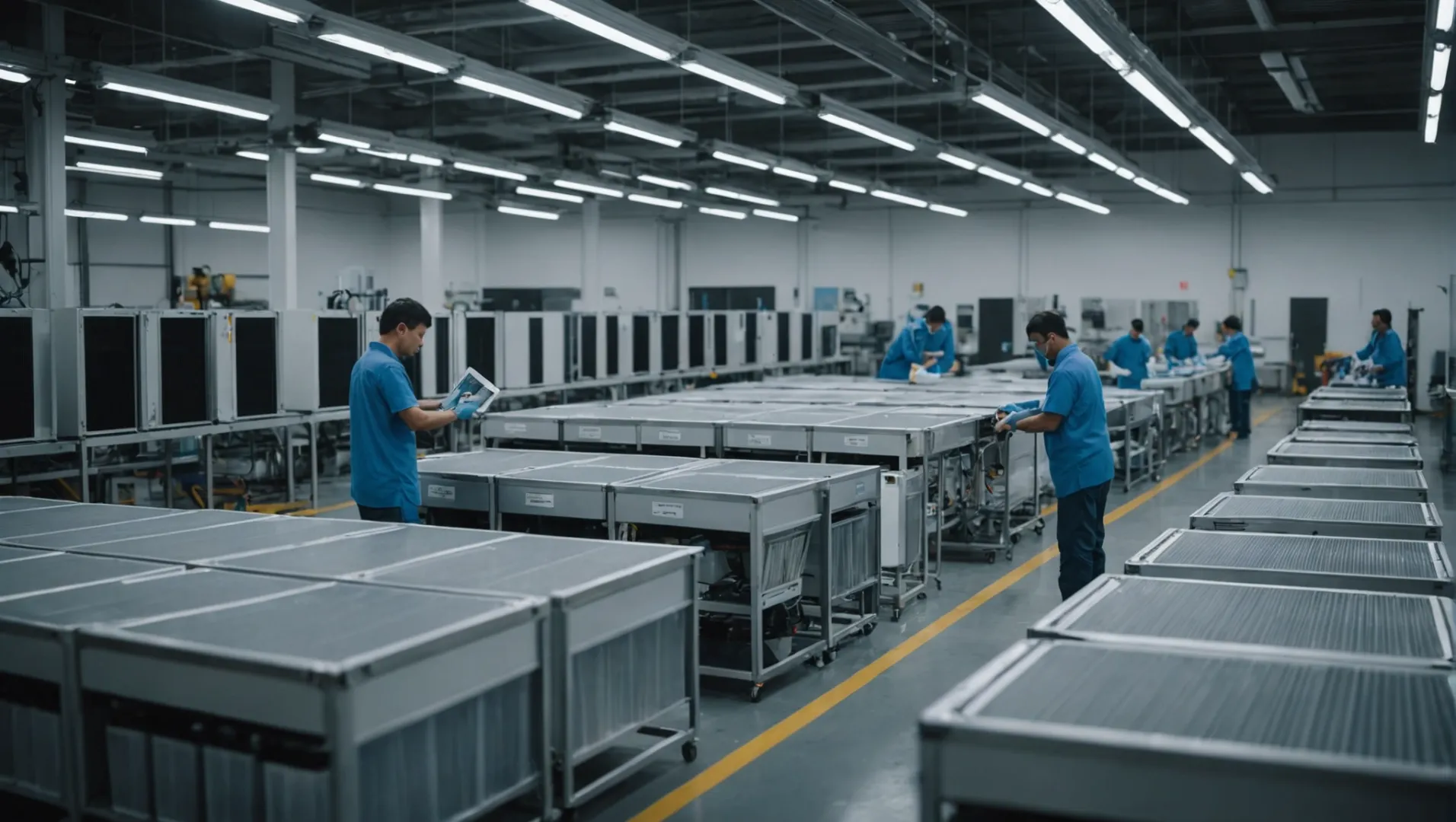
S'associer à des fabricants expérimentés
Le choix d'un fabricant ayant une grande expérience en matière de Conception originale de la fabrication6 (ODM) ou Fabrication d'équipements d'origine7 (OEM) peuvent réduire considérablement les délais. Un partenaire expérimenté disposera de protocoles établis, ce qui réduira la courbe d'apprentissage et le risque d'erreurs.
Rationaliser la communication
Les coûts de communication peuvent constituer un goulot d'étranglement. Établissez des canaux de communication et des calendriers clairs. Les réunions hebdomadaires sont essentielles pour aligner les objectifs et mettre à jour les progrès. Envisagez d'utiliser des outils de gestion de projet pour faciliter le flux d'informations et vous assurer que toutes les parties prenantes sont sur la même longueur d'onde.
Mise en œuvre de tests rigoureux à un stade précoce
La validation précoce des performances par des essais en laboratoire permet d'éviter les retards futurs. La détection précoce des défauts de conception permet d'éviter les échecs en cours de production. Investir dans des essais approfondis dès le départ permet de gagner du temps et d'économiser des ressources en garantissant que le produit répond aux normes requises.
Gestion efficace des projets
Il est essentiel de disposer d'une équipe de gestion de projet dédiée. Elle doit surveiller les délais, gérer les ressources et anticiper les retards potentiels. La mise en œuvre d'un cadre de gestion de projet8 contribue à maintenir l'efficacité et la coordination tout au long du processus de fabrication.
Visites régulières de l'usine
Des visites régulières de l'usine permettent de s'assurer que le processus de fabrication est conforme aux spécifications de la conception. Elles offrent la possibilité de repérer toute inefficacité dans l'atelier de production et de procéder à des ajustements en temps réel.
| Stade | Action clé |
|---|---|
| Sélection des partenaires | Choisir des partenaires expérimentés |
| Communication | Établir des calendriers et des outils clairs |
| Essais | Valider rapidement grâce à des tests rigoureux |
| Gestion | Mettre en œuvre des cadres de gestion de projet |
| Visites d'usines | Contrôles réguliers de l'efficacité |
Les fabricants expérimentés réduisent les délais de production.Vrai
Ils ont établi des protocoles qui minimisent les erreurs et les retards.
Les réunions hebdomadaires ralentissent les processus de fabrication.Faux
Des réunions régulières permettent d'aligner les objectifs et de faire le point sur les progrès accomplis, ce qui renforce l'efficacité.
Pourquoi les tests de performance sont-ils cruciaux au début du développement ?
Découvrez pourquoi les tests de performance peuvent être le facteur décisif dans le développement précoce d'un produit.
Les tests de performance effectués au début du développement permettent d'identifier et de résoudre les problèmes potentiels, garantissant ainsi la fiabilité et l'efficacité du produit. En effectuant des tests précoces, les développeurs peuvent gagner du temps et économiser des ressources en résolvant les problèmes avant la production de masse, ce qui permet en fin de compte de lancer le produit sur le marché avec succès.
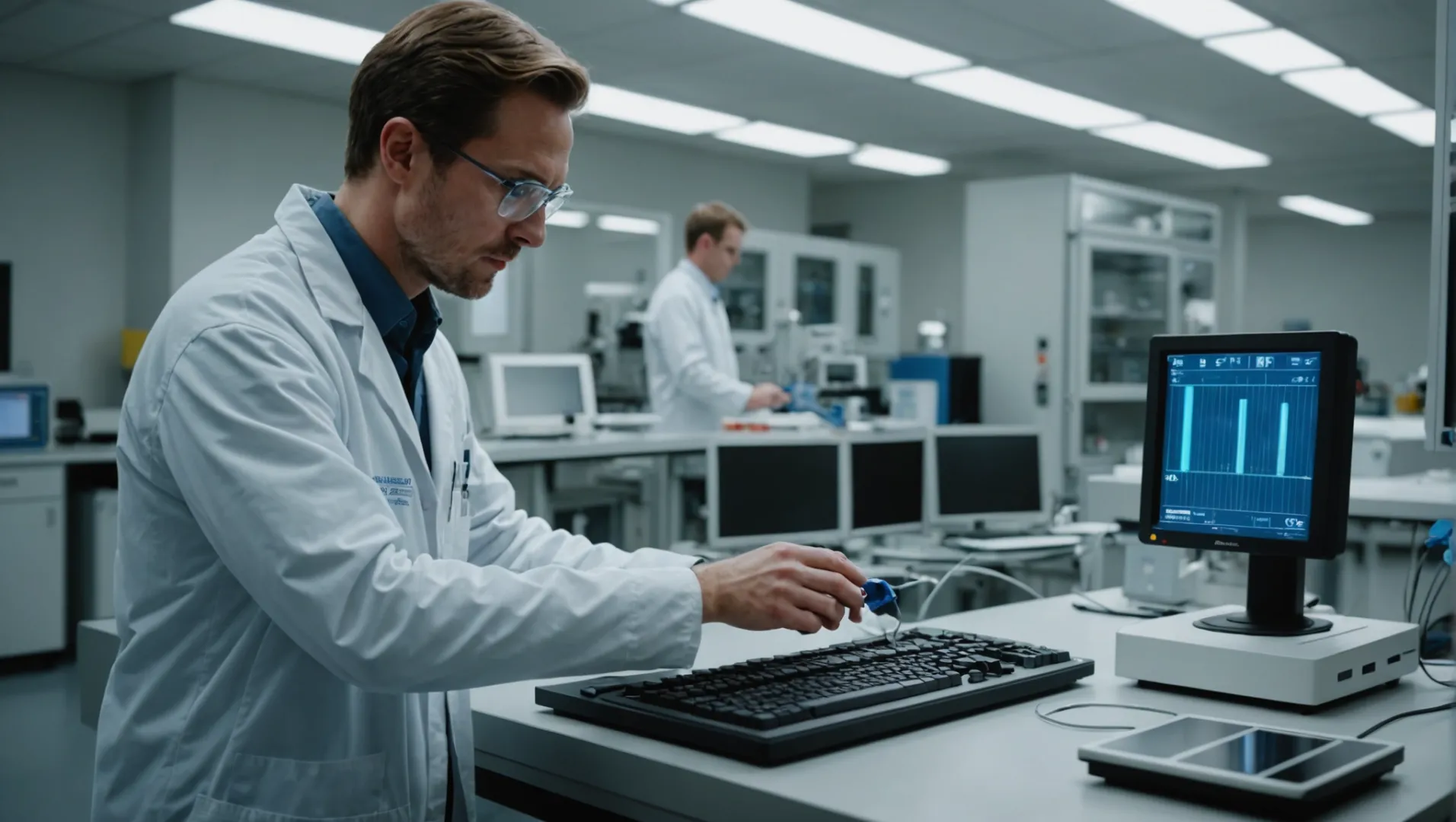
Le rôle des tests de performance dans la réussite d'un produit
Dans le monde compétitif du développement de produits, en particulier pour les purificateurs d'air, il n'est pas négociable de s'assurer que votre produit répond aux normes de performance attendues. Les tests de performance constituent une étape cruciale pour vérifier que le produit fonctionne sans défaillance dans les conditions prévues. C'est particulièrement important pour les purificateurs d'air, qui doivent conserver une grande efficacité dans la filtration des polluants atmosphériques.
Prévenir les défaillances coûteuses
L'identification des problèmes potentiels dès le début de la phase de développement peut permettre d'économiser des coûts importants. Par exemple, si un défaut de performance est découvert au cours de la phase de développement, il est possible d'économiser de l'argent. stades ultérieurs9 Si un problème survient au moment de la production ou après la mise sur le marché, il peut entraîner des rappels coûteux ou nuire à la réputation de l'entreprise. Les essais précoces permettent aux développeurs de modifier les conceptions ou les matériaux afin de rectifier les problèmes sans perturber le calendrier de production.
Améliorer la fiabilité des produits
La fiabilité est un argument de vente essentiel pour les consommateurs qui attendent de leurs purificateurs d'air un fonctionnement sans faille. Les tests de performance permettent de s'assurer que les produits peuvent résister à diverses conditions d'utilisation au fil du temps. Il s'agit d'effectuer des tests approfondis qui simulent des scénarios d'utilisation réels afin de vérifier la durabilité et l'efficacité.
Rationalisation de la ODM Processus
Pour les personnes impliquées dans OEM/ODM Les tests de performance font partie intégrante du maintien d'une communication efficace avec les partenaires. Il fournit des données et des informations claires qui permettent d'aligner les attentes et de s'assurer que toutes les parties travaillent pour atteindre un objectif commun. En partageant les résultats des tests dès le début, les parties prenantes peuvent collaborer plus efficacement sur les ajustements nécessaires.
Meilleures pratiques pour les tests de performance précoces
- Fixer des objectifs clairs : Déterminez les aspects spécifiques de la performance qui sont les plus critiques pour votre produit.
- Investir dans un équipement de qualité : Utiliser des outils de test avancés pour obtenir des données précises.
- Faire appel à des experts : Collaborer avec des ingénieurs et des techniciens expérimentés pour mener des évaluations approfondies.
- Procéder à des examens réguliers : Prévoir des évaluations périodiques tout au long de la phase de développement afin de suivre les progrès accomplis et d'apporter des modifications en temps utile.
L'intégration de ces pratiques dans votre stratégie de développement augmente non seulement la probabilité d'un lancement réussi, mais renforce également la confiance des consommateurs qui dépendent de solutions de purification de l'air fiables et efficaces.
Les tests de performance effectués à un stade précoce réduisent les coûts de production.Vrai
L'identification précoce des problèmes permet d'éviter des rappels et des reconceptions coûteux.
Les tests de performance ne sont pas nécessaires pour les purificateurs d'air.Faux
Les tests garantissent l'efficacité et la fiabilité des purificateurs d'air.
Conclusion
Une planification minutieuse et des partenariats stratégiques sont la clé d'une production réussie de purificateurs d'air. Tirez parti des avis d'experts pour stimuler l'efficacité et l'innovation. Commencez dès aujourd'hui pour rester compétitif.
-
Découvrez comment les équipementiers assurent le contrôle de la conception des produits.. : Un fabricant d'équipement d'origine (OEM) fournit des composants pour le produit d'une autre entreprise et travaille en étroite collaboration avec le vendeur du produit fini. ↩
-
Découvrez comment ODM offre des solutions de conception et de fabrication.. : Le partenaire ODM conçoit et développe ensuite le produit en tenant compte de tous les besoins et préférences essentiels du client. ↩
-
Découvrez les facteurs à prendre en compte lors de la sélection d'un OEM ou d'un ODM : OEM signifie Original Equipment Manufacturer (fabricant d'équipements d'origine) et ODM signifie Original Design Manufacturer (fabricant de produits d'origine). Voici ce que signifient ces deux termes. ↩
-
Comprendre les normes de conformité pour s'assurer que le produit répond aux réglementations de l'industrie.. : Tous les modèles de purificateurs d'air commercialisés ou vendus en Californie après le 18 octobre 2010 devaient être testés et certifiés conformément à la réglementation. Cela incluait ... ↩
-
Apprenez à optimiser vos processus de fabrication pour une meilleure efficacité.. : Pour améliorer l'efficacité d'une usine de fabrication, il est essentiel de se concentrer sur la rationalisation des flux de travail, l'utilisation de technologies de pointe et la réduction des déchets. ↩
-
Découvrez pourquoi il est important de choisir le bon type de fabricant : OEM signifie Original Equipment Manufacturer (fabricant d'équipement d'origine) et ODM signifie Original Design Manufacturer (fabricant de produits d'origine). Voici ce que signifient ces deux termes. ↩
-
Comprendre comment les processus des équipementiers peuvent affecter la vitesse de production .. : Les OEM et leurs fabricants sous contrat (CM) doivent suivre huit étapes pour concevoir et fabriquer un produit compétitif, quel que soit leur ... ↩
-
Découvrez les outils qui rationalisent la gestion de projet dans l'industrie manufacturière : 10 meilleurs logiciels de gestion de projets de fabrication - 1. MRPeasy - Le meilleur pour les besoins MRP des petits fabricants' - 2. Zoho Projects - Le meilleur ... ↩
-
Comprendre comment les tests précoces minimisent les risques et améliorent la fiabilité des produits .. : Une meilleure compréhension du comportement du système, associée à une identification plus rapide des points sensibles, nous permet de fournir plus rapidement une prévision précise ... ↩


